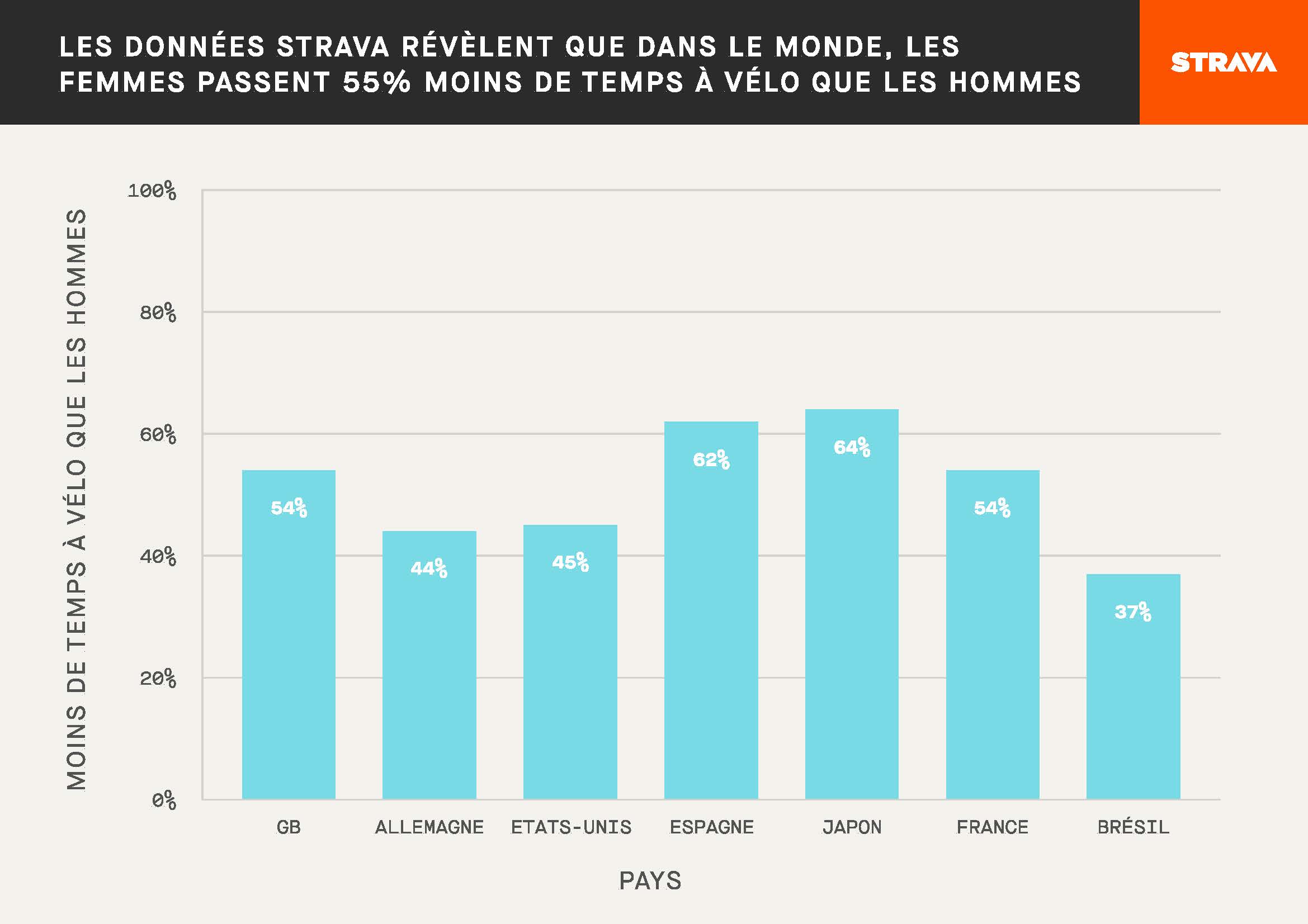” The bicycle has done more for women’s empowerment than anything else in the world said American suffragist and activist Suzanne B. Anthony in 1896. Yet even today, women remain underrepresented on bike paths (and in the vast majority of public spaces). This is confirmed by a new study by Strava, a mobile fitness application, the results of which were revealed on Friday 21 July, two days before the start of the Tour de Femmes France.

©Strava
French women spend 54% less time cycling
The results of the study, conducted on a panel of 3,000 users of the application, 330 of whom are French, are significant: today, French women spend 54% less time cycling than their male peers. English-speaking countries have a name for this gender gap,” the gender gap by bicycle which is roughly equivalent worldwide.
How to explain this difference? First, female cyclists are less likely to ride at night. This fact is true on a global scale: according to the survey, ” women are 23% less likely than men to log exercise on Strava before sunrise and 8% less likely to do so after dark “.
Fear of being harassed at night or increased caution? Definitely a bit of both, as revealed by our colleagues at Sorocity :
The clearest indication of this gender gap occurs at night or in bad weather: 78% of people cycling in these conditions are men […] “The ‘sex’ of the bike is also the virility of the fall, of the risk, of the performance », analyzes Yves Raibaud. It is therefore precisely the fear of an accident that emerges as one of the most powerful brakes for women to grip the handlebars.
“We want more women on the slopes! Sorocity, January 29, 2021.
Driving, whether aboard a motor vehicle or a bicycle, becomes a performance space for a certain image of virility, closely linked to the notion of danger, speed and risk. This is also the very purpose of the latest road safety awareness campaign, released in February 2023.
On the contrary, as Sorocité points out, ” the more trails that are developed, the more likely it is that the proportion of women who engage in urban cycling will increase “. Prudence is the mother of safety.
The bike lane, a hot spot for road harassment
For some (this is my case), cycling often seems safer than transportation or walking home at night. But in practice, as Sorocité rightly points out, it is often also a privileged ground for aggression and harassment for those who like to remind us that we are not welcome anywhere.
They occupy the space, we cross it. And, as soon as we have the misfortune to stop at a red light, it is not uncommon for one of them to remind us in an unpleasant way. Insults, sexist comments or insistent glances… women cyclists are not exempt.
In 2016, 51% of women in Bordeaux also placed the bicycle at the top of the means of transport, exposing them more to harassment.
And the Strava study proves it well, we are outnumbered on cycle paths. Difficult, therefore, to find support in this kind of situation, when women are 243% less likely to find other cyclists of the same gender to ride with.
How to make the city safer for its users? A first way could be, as the NGO Plan International Belgium suggests in its Safer Cities report, to involve women more in urban planning decisions, to better integrate their experiences and meet the needs of their daily lives. And so finally the city is no longer only designed by and for men.
Do you like our articles? You will love our newsletters! Sign up for free on this page.
Source: Madmoizelle
Mary Crossley is an author at “The Fashion Vibes”. She is a seasoned journalist who is dedicated to delivering the latest news to her readers. With a keen sense of what’s important, Mary covers a wide range of topics, from politics to lifestyle and everything in between.




